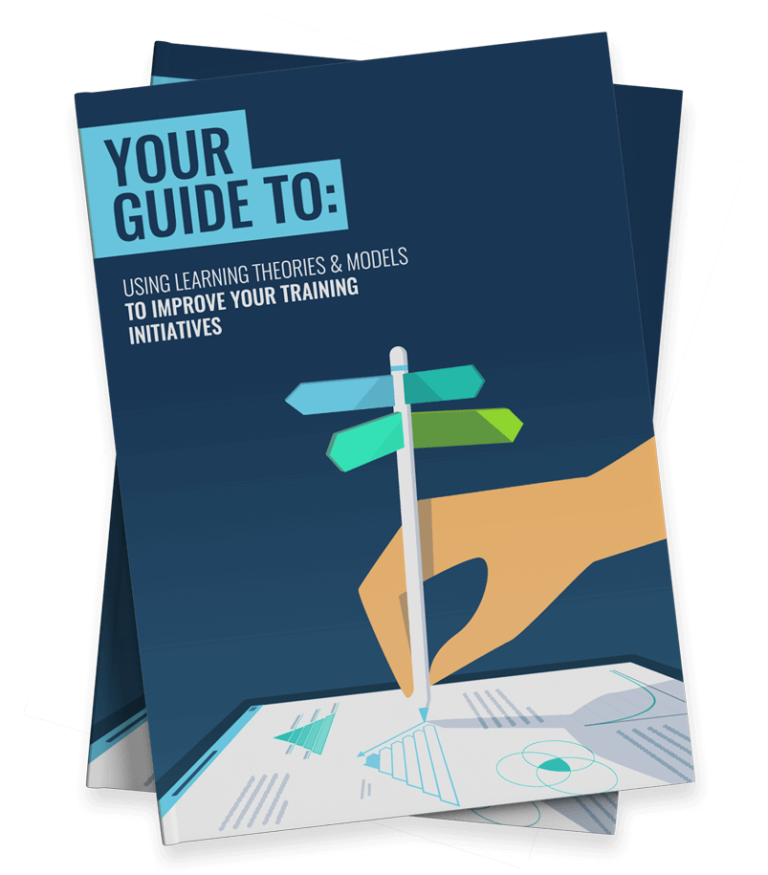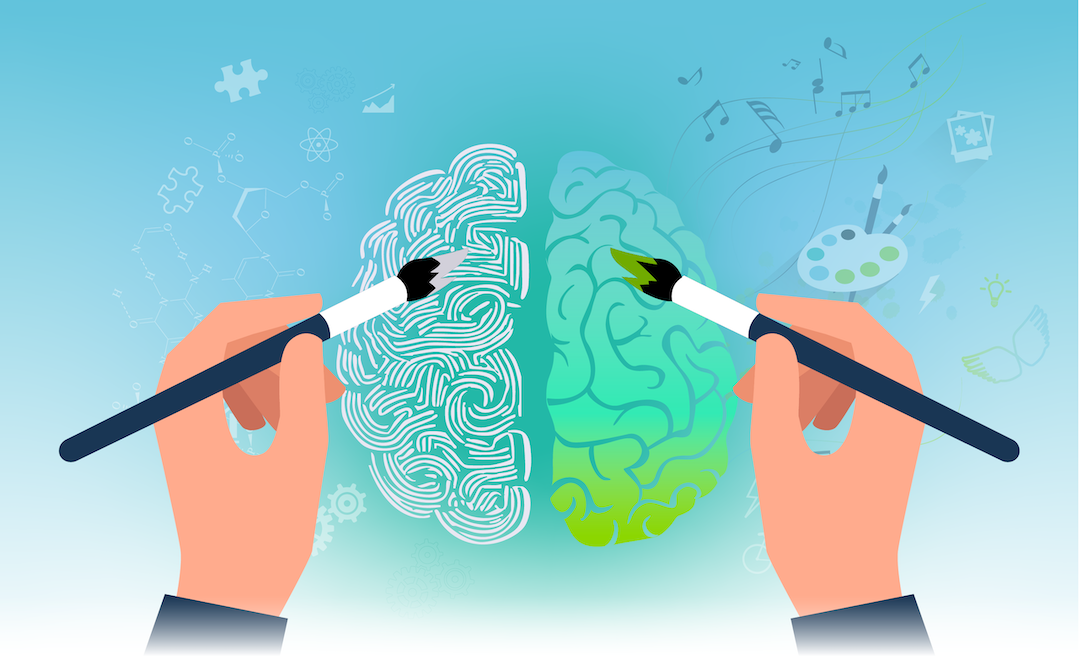
For learning and development professionals, proving the value of training initiatives can be a daunting challenge. The insights we crave are always tantalizingly close, yet frustratingly out of reach.
Beyond simple satisfaction surveys, a robust evaluation framework is required to showcase the true impact of your training. Enter the Kirkpatrick Model, a cornerstone in the field of training evaluation. Its four levels offer a structured approach to measuring the performance of your iniatives.
In turn, this will help you to identify areas for improvement and demonstrate return on investment against your training spend. Naturally, this strengthens your case for securing a larger L&D budget.
In this article, we will look at the Kirkpatrick Model in more detail and explore how to evaluate each level in practice. However, let’s start by meeting ‘the Don’ himself.
Who is Dr. Donald Kirkpatrick?
Dr. Donald L. Kirkpatrick (1924-2014) is the creator of the Kirkpatrick Model. He came up with the four levels of training evaluation in 1959, when he used it as the foundation for his PhD dissertation.
After gaining his BA, MA and PhD from the University of Wisconsin, Kirkpatrick had a long career as a Professor Emeritus at the university’s Management Institute. He taught various subjects, including coaching, communication, time management, change management, team building and leadership.
Dr. Kirkpatrick is highly regarded in the field of training and development. In fact, his framework has stood the test of time, evolving into an industry standard for measuring training effectiveness.
The Kirkpatrick Model: An Overview
The Kirkpatrick Model is a framework for evaluating the effectiveness of your training programmes. It’s equally suitable for in-person training and online learning initiatives.
The model provides a structured approach to assessing the impact and value of training interventions. It consists of four distinct levels:
- Level 1 – Reaction: Do your learners find their training engaging and relevant to their training needs?
- Level 2 – Learning: Have your learners acquired the intended knowledge and skills through the training programme?
- Level 3 – Behaviour: Can your learners apply their new skills or knowledge in real-life situations?
- Level 4 – Results: Has there been positive organisational outcomes as a result of the training programme?

Each level of the Kirkpatrick Model builds on the preceding one, creating a comprehensive picture of training effectiveness. This progressive approach allows L&D professionals to gain deeper insights into their programme’s impact.
In fact, by providing a systematic approach to evaluation, the Kirkpatrick Model helps you to understand your training programmes’ strengths, weaknesses, and impact. As a result, you are better placed to make data-driven decisions and optimise your overall approach.
Before we explore each level of the model in more detail, let’s hear from our very own Juliette Denny, Growth Engineering’s Ideologist in Chief. As a part of her Learning Tribe YouTube series, Juliette examined the Kirkpatrick Model:
The Kirkpatrick Model in Practice
Now that you have a basic understanding of what the Kirkpatrick Model helps you to achieve, let’s take a look at each level separately.
Level 1: Reaction
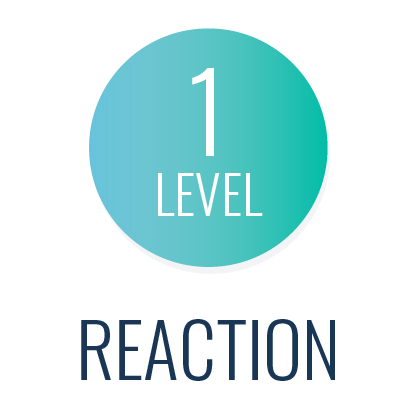
The first level of the Kirkpatrick Model focuses on gathering learner feedback. The goal is to assess your audience’s reaction to your training programme.
At this stage, you should measure learner satisfaction, engagement, and the overall perception of your training initiatives. To do so, you should collect data using a variety of methods, including surveys, interviews, focus groups, and observation.
By collecting and analysing learner feedback, you can identify the strengths and weaknesses of your training from your learners’ perspective. This gives you a great opportunity to tweak it after identifying areas for improvement.
How to Apply Level 1
Your online learning platform (for instance, your learning management system (LMS) or learning app) should give you various tools to help you gather information and evaluate learner reaction.
For example, today’s modern learning platforms enable you to create surveys to gather feedback. Here are some questions you may want to consider including:
- How would you rate the overall quality of the training?
- How relevant was the training content to your job?
- How effective were the training methods used?
- Was the pace of the training appropriate?
- What suggestions do you have for improving the training?
And so on. Feedback from participants is the most popular evaluation metric used by L&D teams. This isn’t all that surprising, as this data is generally easier to collect and analyse.
In addition, good learning platforms help you to monitor learner behaviour within the online learning environment. For instance, you can track logins, content completion rates, content ratings, social learning engagement, and learner progress.
While this step gives you lots of good information, it’s not enough to accurately evaluate the effectiveness of your training. As such, once you have completed the reaction phase, it’s time to move on to the next level.
Level 2: Learning
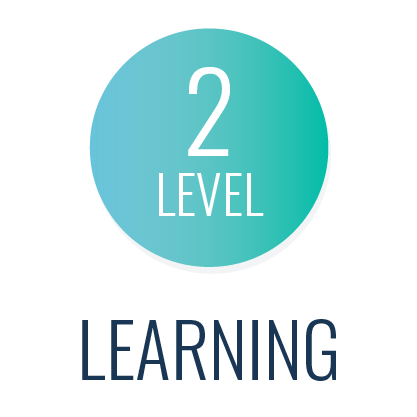
The second level of the Kirkpatrick Model assesses how well your learners have acquired or improved their knowledge and skills through your training programme. Dr. Kirkpatrick outlines five different levels of competence to add that extra dash of precision:
- Knowledge: Learners know the information
- Skill: Learners are able to perform what they have learned
- Attitude: Learners are persuaded that the task is worthwhile
- Confidence: Learners believe they can complete the task
- Commitment: Learners intend to complete the task
During this level, you should focus on evaluating learning outcomes to determine how effective your instructional design strategies are.
Your evaluation should include assessing knowledge acquisition, measuring skill development and evaluating retention. You can do this by adding in-unit quizzes, conducting pre and post-assessments, and using simulations and performance-based tests.
By helping you to understand your learners’ performance, this level enables you to make informed decisions going forward. For example, you can improve and align your objectives better to bridge any skills gaps that your learners have.
How to Apply Level 2
If you host your training programme online, you have various useful assessment tools at your fingertips.
To ensure your learners have enhanced their knowledge, you should use pre and post-assessments to measure how much they have learned.
Similarly, you can use your digital learning platform to measure skills development. For example, interactive simulations or scenarios allow your learners to demonstrate the skills they have acquired through your training programme.
Lastly, you should evaluate your learners’ level of retention and comprehension. You can do so by assigning tasks or projects that require your learners to demonstrate their abilities. This could include, for instance, presentations, reports, reflective essays, and group projects.
Level 3: Behaviour
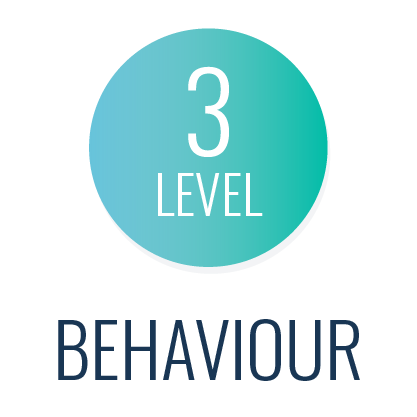
Level 3, behaviour, measures the extent to which learners apply newly acquired knowledge and skills on the job. As such, the focus shifts from classroom learning to real-world performance, assessing whether training has led to observable changes in behaviour.
This is an essential level of evaluation. After all, behaviour change is the ultimate goal of any training programme. By evaluating behaviour change, you can determine whether your training initiative helps your learners to apply their new skills in the real world.
As a result, you can refine your instructional strategies, provide more targeted support and reinforce any desired behaviours.
Collecting data for level 3 requires a shift from self-reported measures to observable behaviours. Here are some common methods you can use:
- Performance Observations: Directly observe employees on the job to see if they are applying new skills or knowledge.
- Manager Feedback: Gather feedback from managers about employees’ performance changes.
- Peer Reviews: Collect input from colleagues about observed behaviour changes.
- Performance Metrics: Analyse key performance indicators (KPIs) to measure improvements in relevant areas.
How to Apply Level 3
To be able to evaluate any changes in behaviour, you need to start by defining and understanding what the desired behaviour is. These behaviours should align with your wider training objectives and organisational mission and values.
After your learners have completed their training, you should focus on assessing behaviour change. You could, for example, observe your learners in their work environment before and after training. This helps you to gauge how well they apply their learning, solve problems, and adhere to desired behaviours.
Employees can also demonstrate behaviour change through improved performance. This could include, for example, better customer satisfaction, improved sales results or reduced time for completing a specific task.
To gain a comprehensive understanding of behaviour change, input from managers, supervisors, and colleagues is invaluable. These individuals directly observe your learners in action and can provide firsthand insights into the application of new skills and knowledge.
Level 4: Results

We’ve reached the pinnacle. The fourth and final level of the Kirkpatrick Model is all about results. It’s time to assess the impact of your training programme in terms of organisational outcomes. You should focus on measuring the tangible results that your training initiative has helped you to generate.
Understanding the overall impact and value of your training is essential. After all, there is no point wasting your L&D budget or resources on training that doesn’t work. Similarly, you need to be ready to showcase the real value of training to your leadership team.
By linking your training programme to your organisational goals and outcomes, you can determine the return on investment (ROI) of your training. This, in turn, helps you to identify its contribution to the success of your organisation as a whole.
In addition, by understanding the value of your training, you can justify the investment that has been made and get easier leadership buy-in for future L&D projects. It also helps you to identify areas for improvement and inform your strategic decision-making.
How to Apply Level 4
CIPD research reveals a significant gap in L&D evaluation. While a majority (70%) of L&D professionals assess training impact to some degree, a mere 12% measure its broader influence on their organisation or society. Yikes!
The trouble is that gathering data on this level is notoriously challenging. Without careful upfront planning, accessing the information needed to measure real organisational impact can be a significant hurdle.
To get started, identify relevant metrics that help you to align your results with wider organisational goals. Here are some common examples you can use:
- Increased revenue: Measure sales figures before and after training.
- Reduced costs: Analyse operational costs, such as decreased errors or waste.
- Increased productivity: Track output, efficiency, or time saved.
- Enhanced customer satisfaction: Analyse customer satisfaction surveys or net promoter scores.
- Improved employee engagement: Measure employee satisfaction and morale.
We have a more comprehensive list here. Whichever metric you focus on, you’ll typically be comparing results before and after the implementation of your training initiative. This typically requires more in-depth data collection than the previous levels. As such, reserve some more time for your results stage.
Our top tip is to consider using a control group. After all, by comparing a group that receives the training (the experimental group) to a group that does not (the control group), you can isolate the impact of your training on specific outcomes.
You should also use statistical methods to determine the correlation between training and outcomes. And don’t forget, this isn’t a one time job. Evaluate results over time to assess your sustained impact.
Level 5: The Next Step
Several experts have proposed expanding the Kirkpatrick Model to include a fifth level of evaluation. Notably, J. J. Phillips advocated for a Return on Investment (ROI) level, which quantifies the financial benefits of training by comparing costs to the value generated by the fourth level’s outcomes.
Others, such as Roger Kaufman, argue that ROI is a level four evaluation, as it’s still focused on internal organisational outcomes. Instead, he suggests that the fifth level of evaluation should focus on the broader impact of training on external stakeholders, society, and the environment.
The Benefits of Using the Kirkpatrick Model

There’s a reason why the Kirkpatrick Model has become a globally used evaluation model. That’s because of the vast benefits of using the framework.
1. Provides Comprehensive Evaluation
The Kirkpatrick Model provides a comprehensive framework for training evaluation. The four levels ensure you focus on all key aspects when evaluating the success of your training initiatives.
By evaluating the effectiveness of each level, you can go beyond measuring mere platform engagement. After all, if you’re just tracking course completion or online platform logins, you will miss out on higher-level outcomes like behaviour change and business impact.
2. Focuses on Results
The Kirkpatrick Model emphasises that L&D teams should measure the ultimate results and impact of their training programmes. After all, this is the only way to determine whether your training contributes to overall improvements in performance.
3. Aligns Training with Organisational Objectives
The best training programmes work towards objectives that align with your wider organisational goals. This is the only way to achieve true behaviour change that influences your organisation positively.
Similarly, by evaluating various levels, the Kirkpatrick Model helps you to address specific performance gaps. This, in turn, enables you to support your strategic goals.
4. Highlights Strengths and Weaknesses
By evaluating all four levels separately, you can spot the strengths and weaknesses of your training programme early on. You can then identify areas of improvement, refine your content and delivery methods, and enhance the overall effectiveness of your training.
5. Helps with Decision-Making
The Kirkpatrick Model promotes evidence-based decision-making. After all, it provides a structured approach to gathering data and assessing the impact of your training.
With all this data at your fingertips, you can then make informed decisions about how to allocate your resources and adjust training strategies. This, in turn, helps you to maximise the return on your training investment.
6. Supports Continuous Improvement
The Kirkpatrick Model helps you to create an effective analysis and feedback cycle. Based on this, you have the data you need to continuously improve your training programme.
By collecting feedback and evaluating the effectiveness of each level, you can make improvements over time. This helps you to enhance the overall quality and impact of your training.
7. Engages Stakeholders
By following the Kirkpatrick Model, you get useful data at each level of the evaluation process. You can then share this information with your stakeholders.
The standardised framework helps you to communicate the value and impact of your training. In turn, this enables you to foster leadership support and engagement from key players within your organisation.
The Limitations of the Kirkpatrick Model
While the Kirkpatrick Model is a valuable framework for evaluating training programmes, it’s not without its challenges. For instance, level 3 (behaviour) and level 4 (results) can be difficult to measure accurately, unless you’re well prepared.
What’s more economic or organisational changes can often make it difficult to establish a causal link between training and organisational outcomes. Suffice to say, getting the data points you need across all four levels requires significant time, effort, and resources.
As a result, many organisations end up focusing on level 1 (reaction) and level 2 (learning), whilst neglecting the higher levels. This can lead to a skewed perception of training effectiveness.
However, this is a challenge that every evaluation model faces. Indeed, despite these limitations, the Kirkpatrick Model remains a valuable tool for understanding the impact of your training programmes, particularly when used in conjunction with other frameworks and methods.
Final Words
Even though the Kirkpatrick model has faced some criticism and has been adapted over time, it’s still an extremely useful model for today’s L&D professionals.
Simply tracking your learners’ content completion is not enough. In fact, robust evaluation strategies help you to hone your learning programmes to drive success and organisational growth.
After all, the model’s structured framework helps you to harness the power of data and feedback to optimise your training initiatives. The end result? Training that creates real results for both your learners and your organisation.
The Kirkpatrick Model is one of many popular models and frameworks used by learning professionals. Get the full breakdown in our guidebook, ‘The Learning Theories & Models You Have to Know‘. Download it now.

